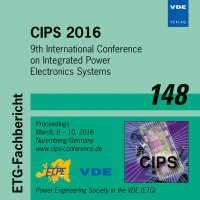Review of Integration Trends in Power Electronics Systems and Devices
Konferenz: CIPS 2016 - 9th International Conference on Integrated Power Electronics Systems
08.03.2016 - 10.03.2016 in Nürnberg, Deutschland
Tagungsband: CIPS 2016
Seiten: 10Sprache: EnglischTyp: PDF
Persönliche VDE-Mitglieder erhalten auf diesen Artikel 10% Rabatt
Autoren:
Majumdar, Gourab (Semiconductor & Device Group, Mitsubishi Electric Corporation, Japan)
Oi, Takeshi; Terashima, Tomohide; Idaka, Shiori (Advanced Technology R&D Center, Mitsubishi Electric Corporation, Japan)
Nakajima, Dai (Manufacturing Engineering Center, Mitsubishi Electric Corporation, Japan)
Goto, Yoichi (Nagoya Works, Mitsubishi Electric Corporation, Japan)
Inhalt:
A review of the integration trend in power module technology has been made in this paper. Since the invention of bipolar transistor power module as a controllable active high power switching element, the power module technology has contributed extensively in elevating power density of power electronics based power conversion systems centering IGBT technology as its core component. On the other hand, higher integration of power module has progressed by incorporating system functionalities driven by the motivation of contributing to miniaturization and performance improvement of overall systems. IPM, which was invented in the 1980s, integrated dedicated drive and protection circuitry along with power switching elements (IGBTs and diodes) in an optimized module structure and provided a leaping progress in terms of easing usability in applications and reliability improvement of applied power electronics systems. Furthermore, direct-fin-attached type power modules have been made available recently providing dramatic improvement in thermal conductivity improvement and system cooling design. Recently, a highly integrated smart module concept combining almost all functions of an inverter together with its heat dissipating cooling heat-sink has appeared. This trend of integration is expected to move forward toward higher technological level basing on the so called application-specific approach. This paper will also include discussions on such trends.


